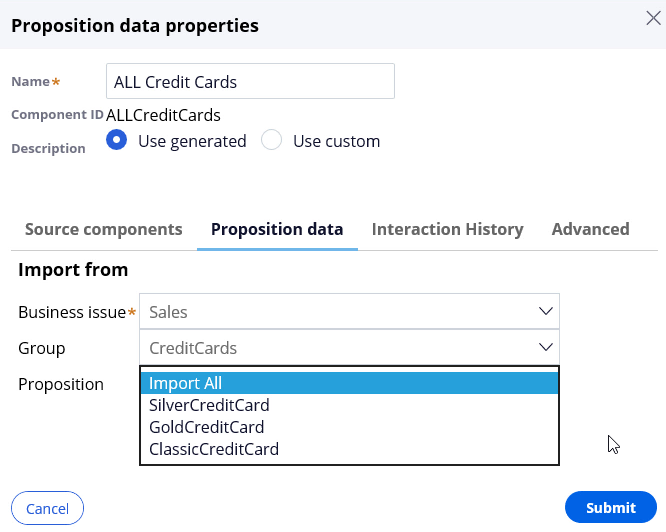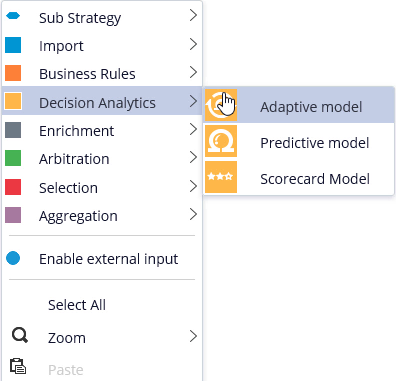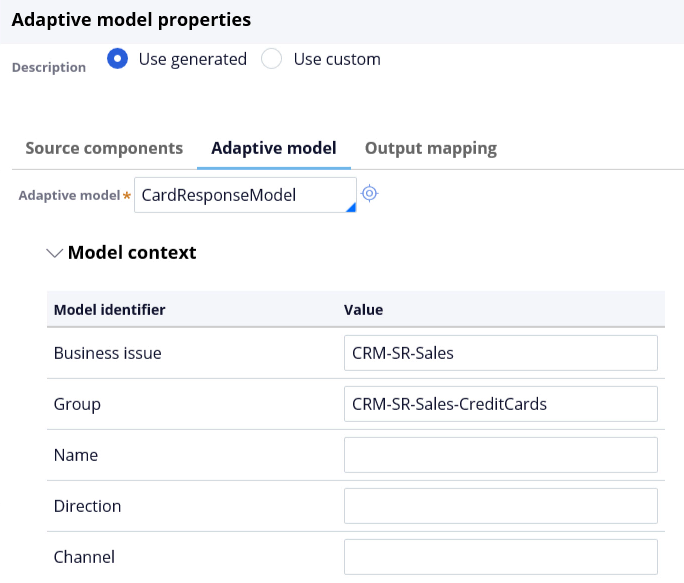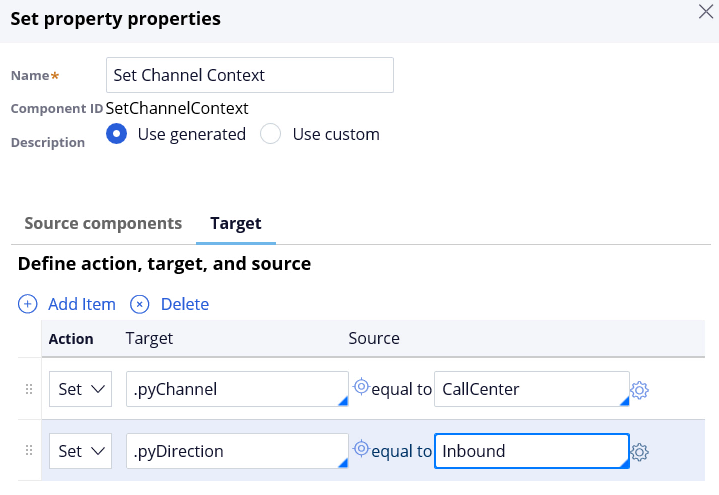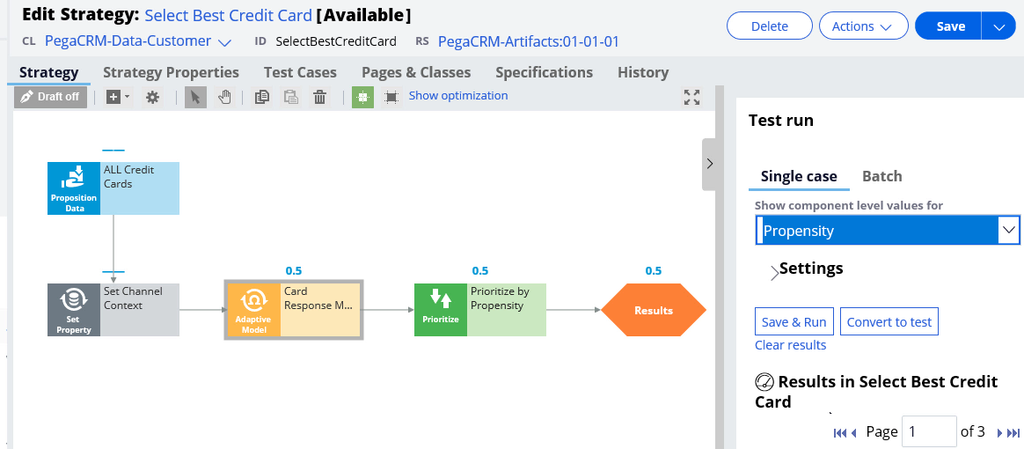Using adaptive models in a decision strategy
Introduction
BankCo, a small credit card issuer, is running a promotion campaign that offers a credit card. The cards are offered to anyone who calls into the call center. To improve the chance of card acceptance, BankCo wants to use an adaptive model to predict the likelihood of acceptance.
Video
Transcript
This demonstration illustrates how to use an adaptive model in a decision strategy.
BankCo, a small credit card issuer, is running a promotion campaign offering a credit card. The cards are offered to anyone who calls into the call center. To improve the chance of card acceptance BankCo wants to use an adaptive model to predict the likelihood of acceptance. As a Strategy Designer, your task is to build a strategy that selects the best card offer using the prediction of the adaptive model.
First, import all credit cards from the Credit Card group using a Proposition Data component.
To add the adaptive model to the strategy, add an Adaptive Model component. You will find Adaptive Model components in the Decision Analytics category.
The model identifier consists of the Issue, Group, Name, Channel and Direction.
The Issue and Group are populated from the strategy-result class. Once you connect the components, the strategy will fill in the other values.
To add the Channel and Direction you need to configure a Set Property component.
Now, return to the Adaptive Model component.
You can see that the Model identifier has been defined.
The output of the adaptive model is stored in a strategy property called pyPropensity. The value of pyPropensity determines how likely the customer is to accept a given offer.
To select the best offer you need to add a Prioritization component. The best offer means the offer with the highest value for pyPropensity.
Now, rearrange the components on the canvas and test your strategy.
Let's examine the output of the Adaptive model component, in other words, the pyPropensity value.
The Propensity value for each proposition is 0.5, which is the same as a coin toss.
By learning from each response to a proposition adaptive models continuously increase the accuracy of their predictions. But, in the beginning the model has no response data on which to base its predictions.
You are at the end of this demonstration which illustrated how to use an adaptive model in a decision strategy.

